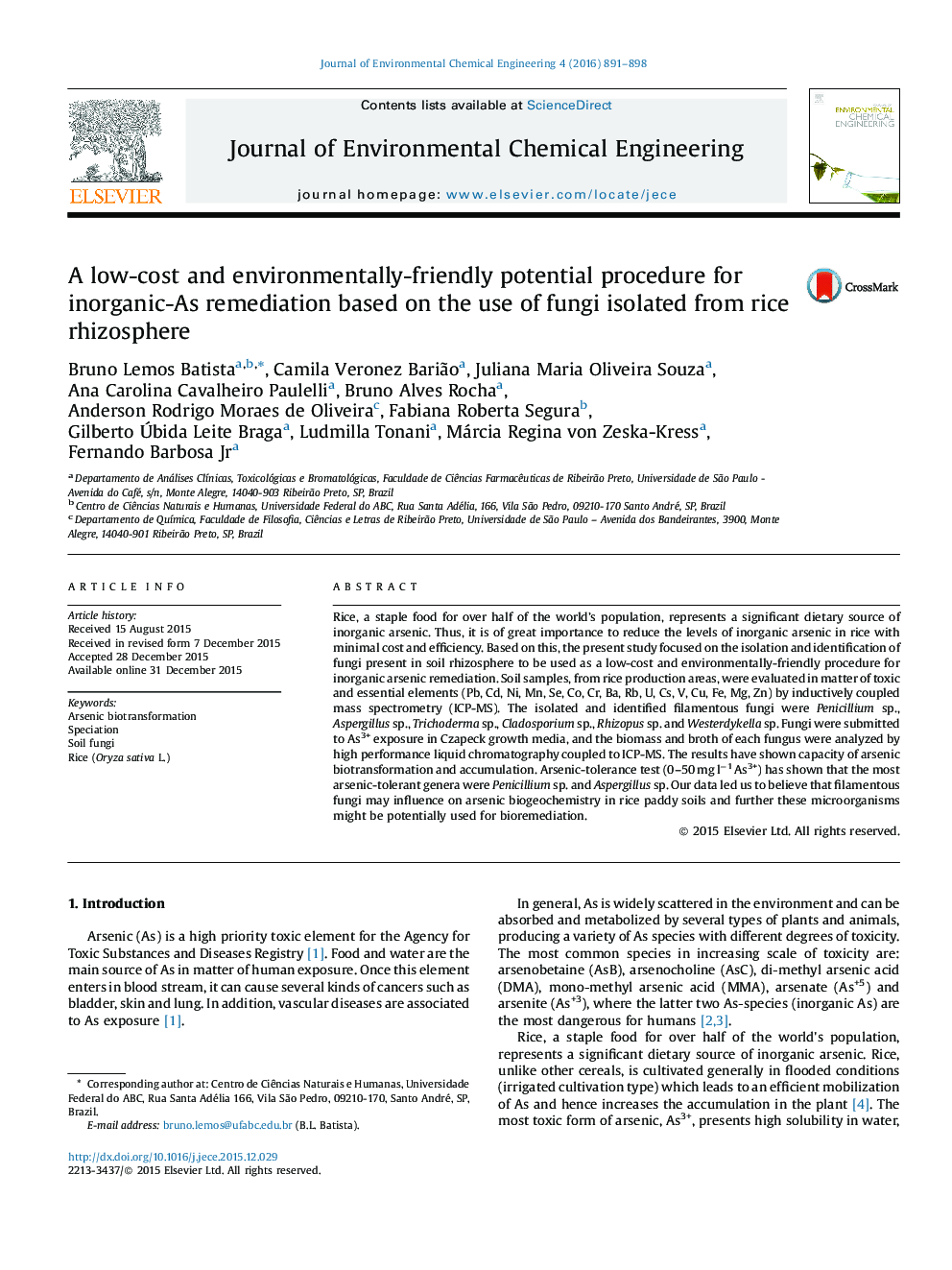| کد مقاله | کد نشریه | سال انتشار | مقاله انگلیسی | نسخه تمام متن |
|---|---|---|---|---|
| 221940 | 464267 | 2016 | 8 صفحه PDF | دانلود رایگان |
• Rice represents a significant dietary source of inorganic arsenic.
• Environmentally-friendly procedure for inorganic arsenic remediation is proposed.
• Fungi were isolated and identified from soil of rice rhizosphere.
• Filamentous fungi showed capacity of arsenic biotransformation and accumulation.
• The most arsenic-resistant genera were Penicillium sp. and Aspergillus sp.
Rice, a staple food for over half of the world’s population, represents a significant dietary source of inorganic arsenic. Thus, it is of great importance to reduce the levels of inorganic arsenic in rice with minimal cost and efficiency. Based on this, the present study focused on the isolation and identification of fungi present in soil rhizosphere to be used as a low-cost and environmentally-friendly procedure for inorganic arsenic remediation. Soil samples, from rice production areas, were evaluated in matter of toxic and essential elements (Pb, Cd, Ni, Mn, Se, Co, Cr, Ba, Rb, U, Cs, V, Cu, Fe, Mg, Zn) by inductively coupled mass spectrometry (ICP-MS). The isolated and identified filamentous fungi were Penicillium sp., Aspergillus sp., Trichoderma sp., Cladosporium sp., Rhizopus sp. and Westerdykella sp. Fungi were submitted to As3+ exposure in Czapeck growth media, and the biomass and broth of each fungus were analyzed by high performance liquid chromatography coupled to ICP-MS. The results have shown capacity of arsenic biotransformation and accumulation. Arsenic-tolerance test (0–50 mg l−1 As3+) has shown that the most arsenic-tolerant genera were Penicillium sp. and Aspergillus sp. Our data led us to believe that filamentous fungi may influence on arsenic biogeochemistry in rice paddy soils and further these microorganisms might be potentially used for bioremediation.
Figure optionsDownload as PowerPoint slide
Journal: Journal of Environmental Chemical Engineering - Volume 4, Issue 1, March 2016, Pages 891–898
